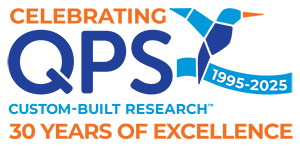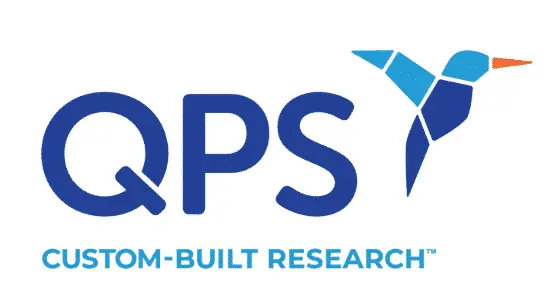All QWBA studies are done in the QPS DMPK labs in Newark, Delaware, USA
QPS supports a wide range of studies for drug development, including quantitative whole-body autoradiography (QWBA) studies, which are conducted by our DMPK research team.
QWBA is a technique employed by researchers to determine the visual location and tissue distribution of radiolabeled compounds in various organs and tissues in the preclinical species. QWBA can be performed separately or combined with radiolabeled mass balance (MB) and plasma pharmacokinetic (PK) studies to provide high-resolution, quantitative data that can be used to characterize drug absorption, distribution, metabolism, and excretion (ADME) properties of drug candidates. QWBA is necessary to help scientists predict human exposure levels prior to a radiolabeled human AME study. This type of study is an integral component of the ADME package required for a New Drug Application (NDA) submission. Regulatory agencies require drug developers to characterize the ADME properties of prospective new drugs to ensure that patients are not exposed to dangerous levels of drugs or drug metabolites.
QWBA Applications
Companies perform Quantitative Whole-Body Autoradiography (QWBA) studies for several important reasons, as these studies provide valuable insights into the pharmacokinetics and tissue distribution of radiolabeled compounds. The information obtained from QWBA studies is crucial in drug development and decision-making.
Here are the key reasons why companies perform QWBA studies:
1. Biodistribution Assessment:
- Tissue-Specific Accumulation: QWBA studies provide quantitative data on the distribution and concentration of a radiolabeled drug or compound in various tissues and organs throughout the entire body.
- Temporal Changes: Companies can assess how the distribution of the compound changes over time, gaining insights into its pharmacokinetics.
2. Pharmacokinetic Understanding:
- Spatial Pharmacokinetics: QWBA allows for the visualization and quantification of drug distribution in real-time, aiding in the understanding of spatial pharmacokinetics.
- Drug Elimination: Evaluate the elimination of the compound from different organs and tissues.
3. Metabolite Identification:
- Tissue-Specific Metabolism: QWBA studies help identify and quantify metabolites in specific tissues, contributing to the understanding of metabolic pathways and potential accumulation of metabolites in certain organs.
- Metabolite Distribution: Assess the distribution of both the parent drug and its metabolites.
4. Optimization of Dosing Regimens:
- Dose Selection: QWBA data aid in optimizing dosing regimens by providing information on the concentration and duration of drug exposure in target tissues.
- Route of Administration: Inform decisions on the most effective route of drug administration based on tissue distribution.
5. Pharmacological Efficacy and Safety:
- Target Tissue Exposure: Understand the exposure of the drug in target tissues relevant to its pharmacological activity.
- Safety Assessment: Assess the potential for drug accumulation in non-target tissues, contributing to safety evaluations.
6. Decision-Making in Drug Development:
- Go/No-Go Decisions: QWBA results play a role in decision-making processes, helping companies decide whether to advance a drug candidate to the next phase of development.
- Risk Assessment: Identify and mitigate potential risks associated with tissue-specific drug distribution.
7. Regulatory Submissions:
- Regulatory Approval: Provide comprehensive QWBA data as part of regulatory submissions to regulatory agencies, demonstrating a thorough understanding of the compound's pharmacokinetics.
- Compliance with Guidelines: Adhere to regulatory guidelines that recommend the inclusion of biodistribution and tissue-specific data in drug development submissions.
8. Translation to Clinical Studies:
- Bridge to Clinical Development: QWBA studies contribute valuable information for designing and optimizing early-phase clinical trials, translating preclinical findings to human studies.
9. Understanding Variability:
- Inter-Individual and Inter-Species Differences: QWBA helps identify and understand variability in drug distribution between individual animals or different species.
- Species Relevance: Assess the relevance of preclinical findings to predict human pharmacokinetics.
10. Integration with Other Preclinical Studies:
- Comprehensive Data Sets: Combine QWBA results with data from other preclinical studies (e.g., ADME, toxicology) to build a comprehensive understanding of the compound's behavior.
In summary, QWBA studies are conducted by companies to obtain detailed information on the spatial distribution of drugs within the body, guiding critical decisions in drug development, optimizing dosing regimens, ensuring safety, and facilitating regulatory approval processes.
The Preparation and Process
QWBA (Quantitative Whole-Body Autoradiography) studies are a specialized type of preclinical imaging study used in drug development to assess the distribution of radiolabeled compounds within the entire body of an animal. These studies provide quantitative data on the spatial distribution of the compound and its metabolites, offering insights into the pharmacokinetics and tissue-specific accumulation of the drug.
Here are key aspects of QWBA studies:
1. Objective:
- Spatial Distribution Assessment: Determine the concentration and distribution of a radiolabeled drug or compound throughout the entire body of an animal.
2. Radiolabeling Process:
- Selection of Radiolabel: Choose a suitable radioactive isotope (e.g., tritium, carbon-14) and incorporate it into the drug molecule.
- Synthesis of Radiolabeled Compound: Radiolabel the drug using appropriate synthetic methods.
3. Animal Administration:
- Radiolabeled Dosing: Administer a precisely labeled dose of the radiolabeled compound to laboratory animals, mimicking intended human dosing.
4. Whole-Body Imaging:
- Autoradiography: Capture images of the entire animal to visualize the distribution of radioactivity.
- Quantitative Analysis: Provide quantitative data on the concentration of the radiolabeled compound in different tissues and organs.
5. Tissue Sectioning:
- Cryosectioning: Cut the animal's body into thin sections (slices) to facilitate detailed analysis of radioactivity distribution in specific tissues.
- Microtoming: Produce tissue sections suitable for autoradiographic analysis.
6. Autoradiographic Imaging Techniques:
- Phosphor Imaging: Use phosphor screens or plates to capture autoradiographic images.
- Film Autoradiography: Employ X-ray film for exposing and developing autoradiographic images.
- Digital Autoradiography: Utilize digital imaging systems for direct capture and analysis of autoradiographic images.
7. Quantitative Analysis:
- Radioactivity Quantification:* Measure the radioactivity in each tissue section to quantify the concentration of the radiolabeled compound.
- Image Analysis Software: Use specialized software for quantitative analysis and generation of concentration maps.
8. Biodistribution Assessment:
- Organ and Tissue Accumulation: Assess the accumulation of the radiolabeled compound in various organs and tissues.
- Temporal Changes: Study changes in distribution over time, providing dynamic insights into pharmacokinetics.
9. Metabolite Identification:
- Radiochromatography: Use complementary radiochromatographic techniques to identify and quantify metabolites in tissues.
- Mass Spectrometry: Confirm the identity of metabolites and assess their concentrations.
10. Integration with Other Studies:
- Complementary Data: Combine QWBA results with other preclinical studies, such as ADME and toxicology studies, to obtain a comprehensive understanding of the compound's behavior.
11. Regulatory Considerations:
- Regulatory Submissions: Provide QWBA data as part of regulatory submissions, especially for compounds with complex pharmacokinetics.
QWBA studies are particularly valuable for assessing the biodistribution of drugs, especially those intended for systemic administration. These studies help drug developers understand how a compound is distributed in different tissues and organs, guiding decisions related to drug safety, efficacy, and optimization of dosing regimens. They play a crucial role in bridging the gap between preclinical and clinical development by providing detailed insights into the in vivo behavior of radiolabeled compounds.
To initiate a QWBA study, the researchers dose the radiolabeled compound to the animal of interest. At specified time-points post-dose (typically within 168 hours), the animal is humanely euthanized and the carcass is frozen. The carcass is then prepared in a solid block of embedding media. Next, a cryomicrotome is used to create thin sections of the whole animal carcass, and these sections are analyzed to determine where the compound is distributed in the body.
QWBA Applications
Performing a QWBA study can inform the following potential questions about the drug candidate of interest:
- Can this drug, or drug-related material, cross the blood-brain barrier (BBB) to penetrate the brain and spinal cord?
- Does this drug reach its intended target organ?
- Where does this drug distribute to and is there accumulation in specific tissues or organs?
- What is the tissue half-life?
- Does tissue exposure correlate with histopathological changes?
The Preparation and Process
Before a QWBA study can begin, the researchers need the following information about the drug candidate:
- The indication
- The route of administration
- The appropriate dose level, which presents no clinical signs or toxicity (i.e., no observed adverse effect level, or NOAEL)
- The clinical plan and treatment regimen
- The excretion pathway (if known) and in vitro ADME and transporter data
- The expectations of the relevant regulatory agency
To initiate a QWBA study, the researchers dose the radiolabeled compound to the animal of interest. At specified time-points post-dose (typically within 168 hours), the animal is humanely euthanized and the carcass is frozen. The carcass is then prepared in a solid block of embedding media. Next, a cryomicrotome is used to create thin sections of the whole animal carcass, and these sections are analyzed to determine where the compound is distributed in the body.
Single Dose Tissue Distribution Study
A single dose tissue distribution study yields valuable information that can be used to design toxicology and pharmacology experiments. In addition, the data produced by a single dose tissue distribution study is necessary to calculate the radioactive dose for a human AME study. For most compounds, a single dose tissue distribution study offers sufficient sensitivity and specificity regarding tissue distribution and the potential for accumulation.
Repeated dose tissue distribution studies can also be used, where necessary. Researchers determine the design and timing of repeated-dose tissue distribution studies on a case-by-case basis.
QWBA Imaging Techniques
Alternative imaging strategies for QWBA imaging are currently being developed without radiolabels (i.e., MALDI-MSI); however, the most common QWBA imaging technique is phosphor imaging. The high-resolution images yielded through phosphor imaging can be enlarged to provide more depth and detail of the distribution in key tissues and organs. In addition to providing tissue concentrations for human dosimetry prediction, which is required for a human AME study, QWBA offers unique tools for investigating tissue pharmacokinetics, efficacy, toxicology, drug delivery, and disposition.
Advantages of a Combination Mass Balance/PK/QWBA Study
QPS has proven innovative study design and executional excellence for radiolabeled studies and there are several advantages of placing your study at QPS:
- One Study Director manages the study for better information flow to the sponsor representative(s).
- One In-Life study protocol combines the intricacies of the two study components that have two distinct purposes to fully characterize the disposition of the drug candidate.
- Specific information such as entero-hepatic recirculation, involvement of drug transporters in the intestines or other tissues, retention of drug-derived components, metabolite profiling and quantification, and possibly mechanism of observed toxicity can be assessed through objective-driven study design.
- QPS helps save radiolabeled material and avoid possible degradation and re-purification by using the material in a timely manner, utilizing one formulation and one dose formulation assay.
- Cost and time savings are ensured because there is only one In-Life study set-up and report.
- Timely availability of both types of data facilitates interpretation and conclusions.
- Radiolabeled samples (urine, feces, bile, and plasma) are retained for potential metabolite identification and profiling under a separate protocol and report.
Completion of these preclinical DMPK studies, coupled with clinical PK and a radiolabel human mass balance and metabolite profiling study, will provide an ADME data package with exceptional scientific integrity and quality that will fully support a range of regulatory submissions.





